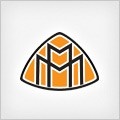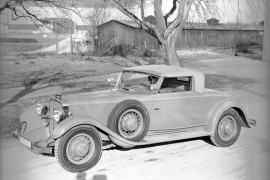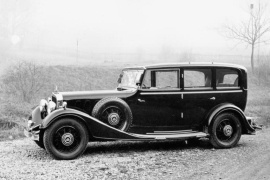
MAYBACH Typ W6, W6 DSG and DSH
Generations Timeline, Specs and Pictures

The DSG version entered production shortly after the release of the newly developed W6 platform.
Fitted withe the same in-line 6-cylinder petrol unit from the older W5 model, the new car was produced for 3 years until receiving an internal upgraded with the introduction of twin-overdrive transmission (DSG) which was essentially an improved version of the SG. Featuring a longer wheelbase than previous models, the W6 was a slightly differently styled vehicle with updated performance figures and very few units built, having reached a total of 90 for both regular and DSG types.

Having a fate identical to the typ 12 engine, the double-six-half migrated through two different body-types with the last having been a cabrio.
Built as most of the MB Cabriolet D models, the car was a large touring-convertible with a 2+2 seating configuration. In fact, the car is much like the MB Nurburg Cabriolet in terms of appearance with the same slim and stretched fenders, windhshield and rear end design. Despite having been strongly linked to MB-models, the DSH registered more popularity than its Nurburg counterpart.

Despite its seemingly bizarre name-choice, the DSH has nothing to do with anything outside the car engineering realm.
Its designation stands for “Doppel Sechs Halbe” or “double six half”, pointing at the car’s six-cylinder 5.2 L unit derived from the larger and more powerful DS V12 design. Following the development of Karl Maybach’s innovative “typ 12” engine that developed as much as 250 hp in certain models, the DSH was introduced as a smaller but still peppy cousin with a power output of 130 hp. The plant pushed the car to a top speed of 87 mph (140 kmh) via a 4-speed sequential transmission.

Karl Maybach faced the difficulty of continuing his father’s legacy after Wilhelm Maybach passed away in 1929, and the first model built after the tragic event was the W6 lineup.
In the late 20’s it was much easier to make a convertible since all the cars featured a body-on-frame construction. Selling them was a different story. But Karl Maybach already had the network and the brand image to do that. He had the idea to produce an entry-level for the brand, creating the W6 lineup. The company already made the DS7, which featured a V-12 engine, but it was costly. With the new model, he tried to get more customers and offered a Maybach-quality vehicle with an inline-six powerplant under the hood.
At the front, the W6 featured a chromed bar between the long wheel-arches that supported the big headlights. Its slightly pinned-out radiator with vertical slats was pushed far behind the bumper, above the front axle. Since the car’s engine compartment was long, it allowed the carmaker to install two spare wheels on each side. For the open-top version, Maybach offered a unique system that allowed full or partial opening.
Inside, the leather and wood trims blended harmoniously. There was more room in the back than on the front seats. It was a car where the owner was usually driven around by a chauffeur. Just two years after the launch of the new model, the world economic crisis struck, and the carmaker lost most of its customers, and those who aimed for a Maybach sought the top-spec version.

Two years after the company founder passed away, his son understood that building expensive cars won’t make them survive on the market, and he made the W6 model.
Wilhelm Maybach lived a long life, and, in 1929, at the age of 83, he passed away after short, two-day suffering. Karl Maybach, his son, was committed to continuing his father’s legacy. The company was already produced the DS7. The initials came from the Doppel-Sechs (Double-Six), which designated the V12 engines well known for their smoothness. But the car was very expensive to build, and its sticker price was high enough, so just a few could afford one. Karl Maybach had the idea to offer the already known DS7 with an inline-six engine, which was half of the ones installed in the DS series. The result was named W6.
At the front, the W6 featured a chromed bar between the long wheel-arches that supported the big headlights. Its slightly pinned-out radiator with vertical slats was pushed far behind so it would be protected in the event of a crash. Since the car’s engine compartment was long, it allowed the carmaker to install two spare wheels on each side.
Inside, the leather and wood-trims were blended in a harmonious way dictated by the German luxury brand. There was more room in the back than on the front seats. It was a car where the owner was usually driven around by a chauffeur. But the car had limited success. According to some sources, Maybach produced only 40 W6 units, and most of them were lost during WWII.























































